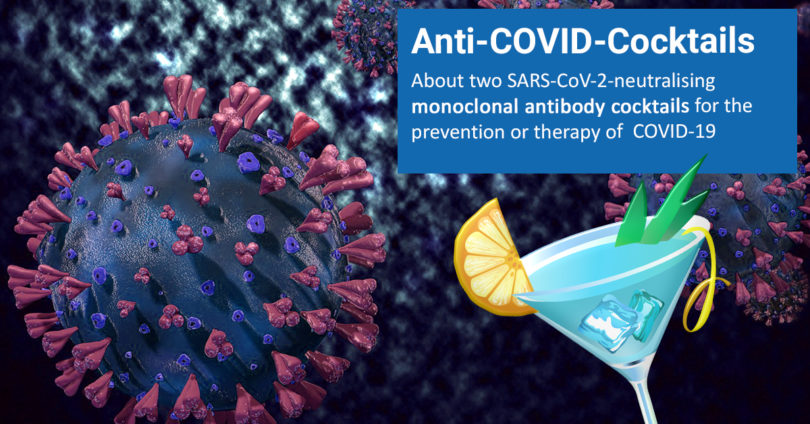About Monoclonal Antibodies
The use of monoclonal antibodies (mAbs) has been on the rise ever since their publication in 1975. Even though the first murine drug formulations (derived from mice) did not have the same efficacy of today’s fully humanized mAbs, the elegance of an mAbs‘ mechanism of action already suggested a bright future for them.
An mAb works by recognizing and finding specific proteins on a cell, called antigens. By binding to those antigens, some mAbs can for example target unhealthy cells and trigger an immune response to fight the disease.
Common applications include the treatment of HIV, myeloid leukemia, and even the prevention of migraine headaches. On YouTube, you’ll find an abundance of short videos explaining how mAbs work, if you want to learn more.
Antibody Cocktails
A powerful COVID-19 treatment?
In March, the renowned Paul-Ehrlich-Institute, Germany’s Federal Institute for Vaccines and Biomedicines, reported about two SARS-CoV-2-neutralising monoclonal antibody cocktails with potential for the use in COVID-19 prevention or therapy.
Casirivimab/Imdevimab (REGN-COV2) and Bamlanivimab/Etesevimab are IgG1 monoclonal antibodies that target the spike protein of SARS-CoV-2, effectively inhibiting the interaction of the human ACE2 receptor with the virus!
This very promising approach is now in the rolling review process by the CHMP and the EMA.
Antibody Stability
A Key Quality Control Marker
But how does this connect to Bruker? As mentioned, these cocktails use two APIs for increased effectiveness. However, where multiple therapeutic agents are combined in a single formulation, i.e., coformulated, the quality and safety of the individual agents must be preserved. For this, extensive testing is necessary.
In recent years, Bruker’s CONFOCHECK FT-IR system has emerged as a decisive tool in antibody research and quality control. Several publications use the system to evaluate antibody stability and decomposition processes in formulations. Others describe the use of higher order structure verification by FT-IR in the development of biosimilars and to verify batch-to-batch comformity.
At the core of this approach is the strong utility of infrared spectroscopy to characterize the secondary structure of the protein. We explain the use of FT-IR for protein analysis in this 15-min educational video:
If you want to know more about FT-IR and protein analysis, you can always check out our website or contact us directly to learn more!
References
- [1] https://www.pei.de/EN/newsroom/hp-news/2021/210311-monoclonal-antibodies-cocktails-against-covid-19-rolling-review.html
- [2] https://www.tandfonline.com/doi/pdf/10.1080/19420862.2020.1738691
- [3] https://www.sciencedirect.com/science/article/abs/pii/S1045105620300920








